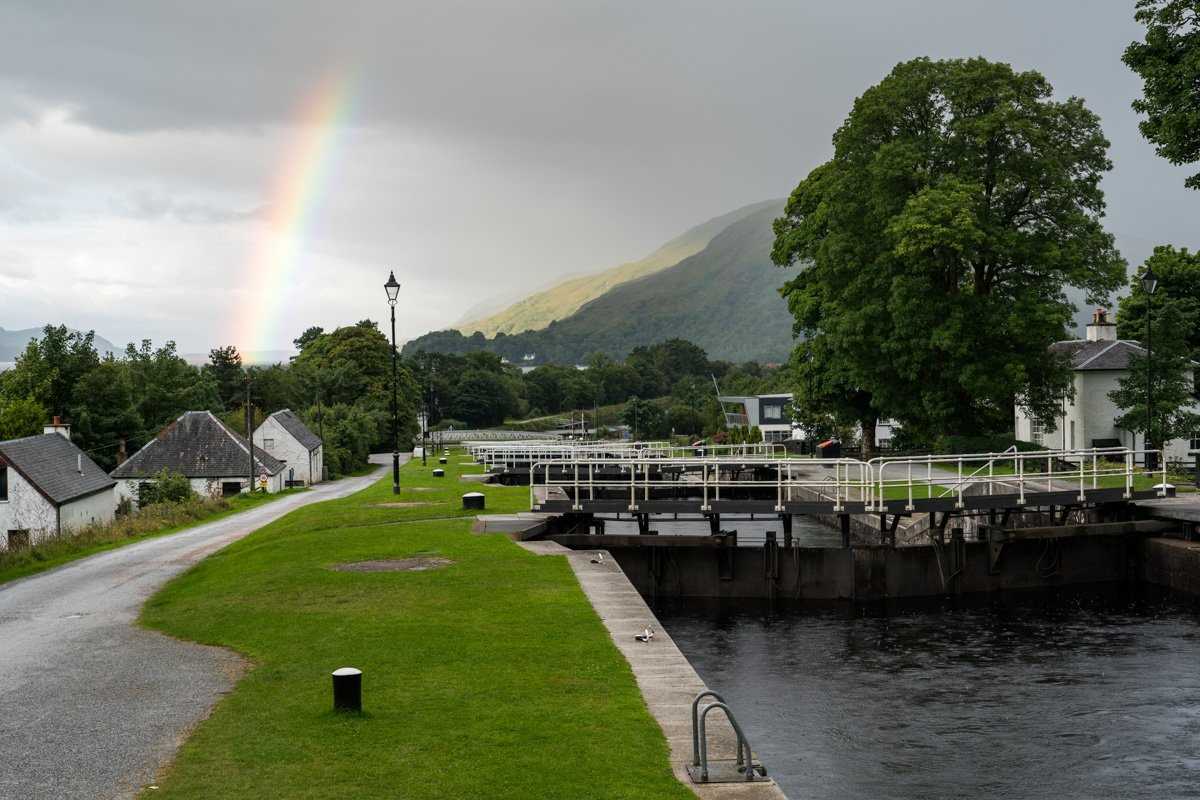Our arrival on the Atlantic coast of Scotland had seen heavy showers and spectacular accompanying rainbows. The showers gradually eased as we left the sea lock at Corpach to sail past Fort William, a name redolent of the Jacobite disturbances and a town still known in Gaelic simply as The Garrison, An Gearasadan. The town is known to all British schoolchildren from their geography lessons: it boasts the highest rainfall of any British town, and today was living up to its reputation. The scenery here is both dramatic and beautiful, with Ben Nevis the highest mountain in Britain as a backdrop to the east and the rugged Morvern Peninsula to the west. Squeezing through the Corran Narrows into Loch Linnhe we continued our sail in the direction of the lively port of Oban, with a presentation on Celtic Christianity en route to prepare us for our full-day excursion to Iona tomorrow.
Oban had much to offer for the remainder of the day. It is a busy community with the comings and goings of inter-island ferries, fishing boats, and a booming tourist trade as well as being the administrative center for the county of Argyll. A railway station links the town with Glasgow to the south. After lunch we visited the Oban Distillery, its premises largely unchanged since the late 18th century. Free time enabled guests seeking a challenging walk to climb the steep streets behind the promenade to view McCaig’s Tower, a vainglorious but spectacular folly commemorating the McCaig family and using up a considerable portion of the family fortune. Later in the afternoon local guides were available to lead walking tours of the town that proved very popular. Oban markets itself these days as Scotland’s seafood capital and some guests arranged to eat dinner ashore in the evening, although for many the best choice of restaurant in town was the Robert Louis Stevenson restaurant on board Lord of the Glens. An added incentive to remain on board was a whisky tasting session held in the lounge after dinner.









